
6 minute read
Inclusive office work stations: because having accessible buildings is only part of the puzzle
from Access Insight - Summer 2021
by ACAA
by Rachel Whymark (Positive Access and Sustainable Solutions (PASS) Building Consultants)
Rachel’s passion and advocacy for a more accessible (and sustainable) building environment began as a trainee building certifier in the UK 33 years ago. Specialising in interpretation of legislation, particularly of Part M (Access to and use of buildings), Part L (Conservation of fuel and power) and Part B (Fire safety) of the UK building regulations. She went on to be part of the specialist building control team at the National House Building Council, judged the RIBA housing design awards, and worked as a project manager for the Movement for Innovation’s Housing Forum. Arriving in far North Queensland 16 years ago, her attention turned to working for builders and developers and enabling the construction of many award winning homes in far North Queensland with an emphasis on sustainability and accessibility. In 2018, Rachel decided to become an access consultant aiming for Accredited membership of the ACAA, undertaking her Diploma in Access Consulting. She has also completed the Specialist Disability Accommodation (SDA) assessor course, and Liveable Housing Australia (LHA) course. Rachel is based in Cairns and works as an access and sustainability consultant for projects all over Australia.
Ensuring that a building is compliant to meet legislative requirements is one thing, but having truly inclusive work places is an entirely different animal, and just as important.
Of course there are the social contexts of the organisation, which will to a greater or lesser degree determine how far they are willing to go in terms of providing comfortable and useable working environments for as many people as possible. But this aside, there is an incredible array of furniture and accessories that can support a very wide range of people to enable office work spaces in particular to be extremely versatile, and in doing so, provide a fundamentally important part of the puzzle that completes an inclusive workplace. Without consideration of how individuals will be needing to carry out their work in their personal workspace, opportunities to support staff with disabilities may be missed. Meaning that not only individuals miss out, but so does the company employing them.
CONSIDERATIONS BEFORE YOU EVEN REACH THE DESK
Where desks are located in relation to accessible bathrooms, lunch areas, required facilities such as printer rooms, meeting rooms and also a safe means of access (and egress) should be taken into account. It should be a given that spatial requirements of the building structure are met, but building management is going to play an important role in ensuring that the building is functional and safe for all its occupants. Piling boxes full of archived files, or reams of paper or spare chairs in printer rooms for example, if they impede access, is going to be a problem for most people, but especially those who may not be able to easily negotiate around the obstacles or move them.
But let’s focus on the furniture and tools that can facilitate the work space.
WHICH DESK?
AS1428.2 1992 goes into detail in terms of reach ranges, height, depth and width recommendations, knee and toe clearances, etc. for a number of areas including tables, counters and worktops. Try and consider not just work stations, but also conference room tables, lunch area tables, makeup areas in restrooms and other furniture (fixed or moveable) that is likely to be used by staff and/or visitors.
In Australia, there is access to a good range of suppliers who specialise in custom furniture for people with disabilities, but it may questionable as to whether this would be necessary in some cases. An adjustable height desk of any kind is a good starting point, as long as there are no obstructions for knees/toes.
Moveable furniture of course is ultimately going to give you the most flexibility, rather than fixed cabinetry, but even here, there could be elements which are adjustable, connected to fixed elements (being mindful of junctions between and prevention of injury or trapping/pulling cables).
Furniture need not be expensive, even doing a quick search, I found prices (in Australia) for a 1500mm wide x 650mm depth table in many different colours at $412.00 with upgrade options for electric adjustment, tilting, cut outs, locking castors and different heights available (to cater for people of all heights).
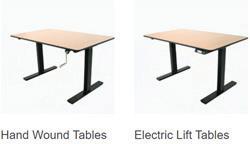
CAP Electric or hand wound height adjustable tables come in a variety of sizes and colours.
CAP Furniture tables start from $350.00 for a 950mm x 650mm hand wound table. Electric lift tables (1200mmx 650mm) from $820.00.
Think also about space and facilities for walking aids (or an assistance animal) for people who do not use their mobility aid as their working chair. Crutches constantly falling over, or becoming a dangerous tripping hazard is a level of detail that may need to be taken into account when planning where work stations are located.
Looking for a smart meeting room table? Meeting room and cafeteria tables should ideally enable anyone to sit anywhere without table legs or bars getting in the way. Thinking ‘inclusive’ at the outset will result in better choices at the outset. This Ropox table is available in many sizes, with the largest being 3000mm x 3000mm ($3,800).
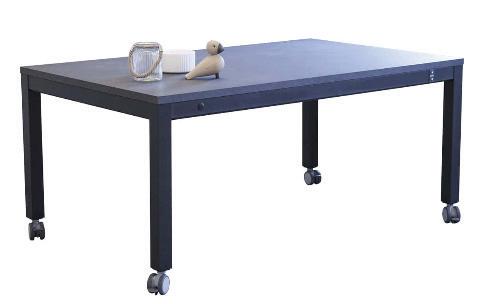
Tables such as this 4Single Ropox example are ideal for lunch rooms or meeting/conference rooms.
In some instances, an individual may be prescribed specific equipment items that will aid a comfortable or ergonomic working posture, whether that be in the home or office environment. An example includes the Ropox “Vision Table”, which are incredibly adaptable to a wide range of requirements with tables being able to tilt (either fully or part of the table), electric or manual, with magnetic attachments such as document holders and pen holders. Ranging from $5,000 up to around $10,000 depending on which options you choose.
Ropox ‘vision table’. With so many configurations available, they can be single users, or for up to a group of 4 people.
OTHER OPTIONS FOR WORK STATIONS
If you are needing to adapt a fixed desk for example, then you have options such as the Ergotron Workfit-S single LD Sit-stand workstation which can be retro-fitted and enables your keyboard and monitor to move up and down simultaneously with a gentle push or pull action. These are great for people who need to vary their work position.
Ergotron Workfit-S is around $1,000 and is fixed to an existing desk.
CHAIR OPTIONS
All staff should be provided with chairs which support healthy sitting postures. It also improves productivity, so a win-win all round. Chair selection is very dependent on the needs and requirements of the individual and their work environment and assistance may need to be sought to choose an appropriate ergonomic chair to suit your requirements. Chairs with adjustable arm rests (if these are appropriate to your desk set up), headrests, lumbar support, seat depth/ backrest configuration and seat tilt can all aid to create a supportive and comfortable sitting environment.
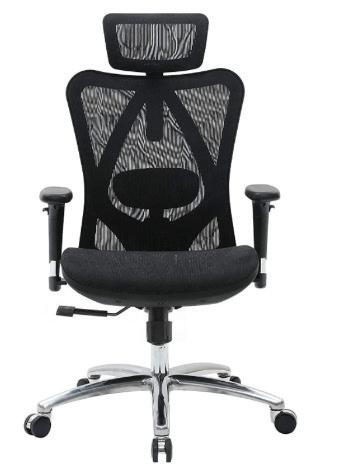
Ergonomic chair with head, arm and lumbar rests, around $1,000.
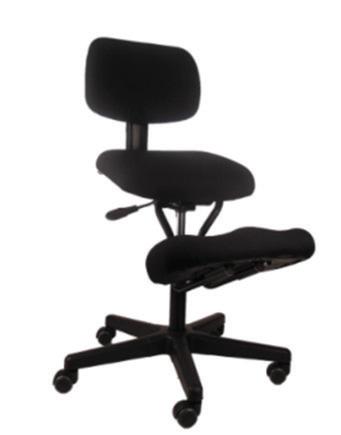
No more pain ergonomics Kneeling Chair $295
STORAGE, FILING AND RETRIEVAL
If filing, or retrieval of documents is required (which is not electronic), are these accessible? Do they require lower shelves, or pull out drawers be provided to ensure ease of access?
If storage is electronic, are naming conventions clear, are things easy to find and are monitors and programs set up to have large, legible fonts and other information?
KEYBOARDS, PHONES AND MICE
Voice activated apps or devices is a whole area in itself, as well as the accessories to support a more inclusive work station, including special mice, wrist/arm supports (fixed or moveable), specialist keyboards, phones and monitors.
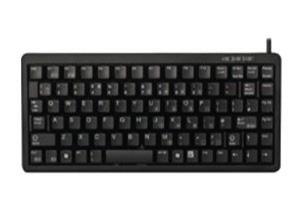
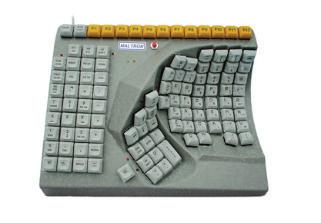
Keyboards such as these from Maltron are designed with one handed use in mind.
Happily, there are more and more assistive technologies and products which are freely available to support people with disabilities in the workplace. It is often just a question of whether organisations are prepared to invest a little bit of extra initial time, and possibly money to ensure they can get the very best out of all their team members.
Acknowledgements:
Thanks to HLS Healthcare for their time in discussing products and the furniture solutions they have provided to a variety of clients.










